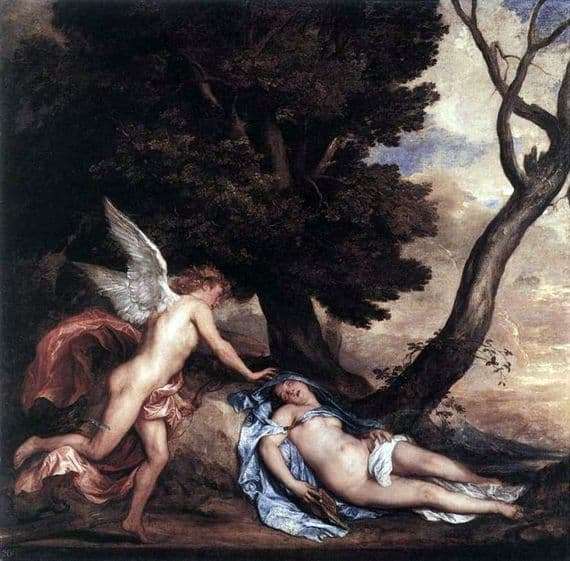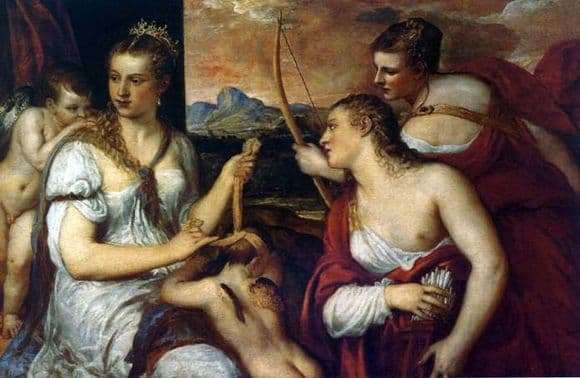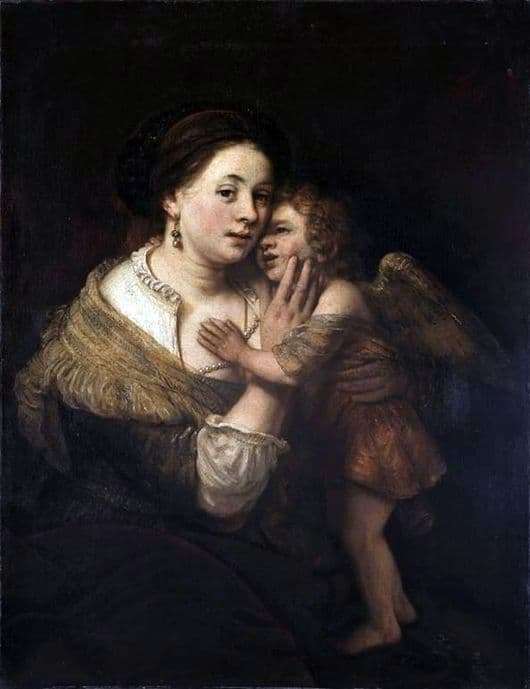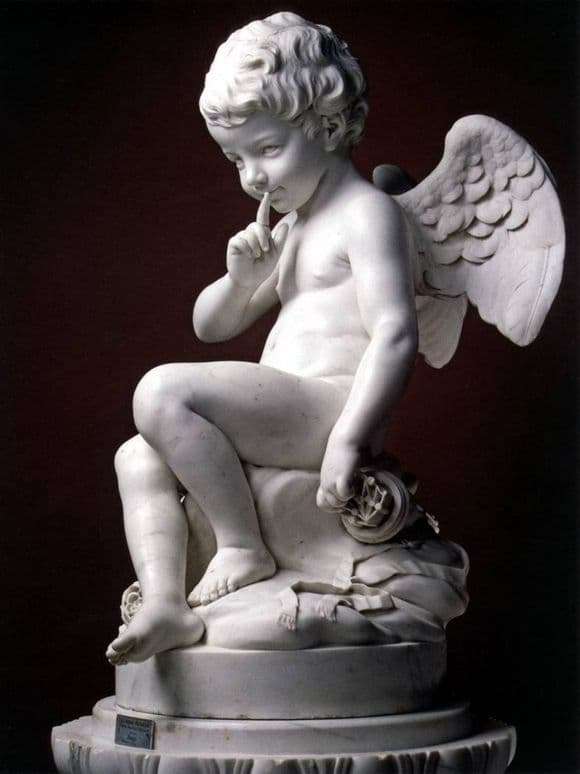
The relationship between Cupid and Psyche is a favorite subject of Bouguereau paintings. The work is an excellent example of academic painting. The attention to detail, the idealization of the human body, the exquisite palette and eroticism make the canvas a delight to the eyes. In her there is no edification and morality, she only calls to surrender to sensuality, like the young Psyche in the arms of her beloved.
The desire of the artist to perfection is well traced in perfectly adjusted proportions of bodies. The chanting of physical beauty is reflected in everything: in delicate translucent colors, exquisite gestures, flowing tissue. Slightly elongated and rounded shapes, soft bends, no strict vertical and sharp corners prevail.
Special attention deserves the heavenly background behind the heroes. This azure sky, radiating divine light, characteristic of the plots of Renaissance art. It creates lightness and lightness, leads to sublime thoughts, emphasizes the conquest of the sweet bliss, in which the Cupid carries the royal daughter to Psyche.
Her head is thrown back, her eyes blissfully covered, she easily clung to the body of Cupid and in everything follows a beautiful young man. There is no struggle, regret and oppressive doubts. The winged Cupid looks at the girl in love and points upwards – where there is no sorrow and sorrow, where all-embracing love and goodness reigns.
Spirituality, some sweetness, the triumph of youth and life in general soften the frankness of the picture, despite the almost completely naked bodies. It suggests not about depravity, but about what eternal beauty is. The work is designed to distract from everyday life, serious thoughts, caress and delight the eye. She perpetuated Bugreau’s main aspiration of all life – to create perfection and generously share the beautiful with the world.
Description of the painting by William Bouguereau “Cupid and Psyche”







